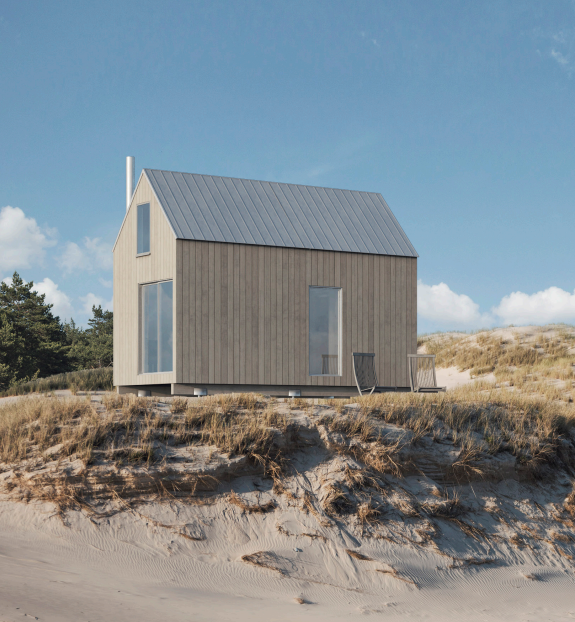HUTS ADU Plans : FAQs
You are one step closer to creating a little space of your own! Read on
Read more
If you have purchased one of the HUTS ADU plans, you may have already secured a location to build the future structure. ADUs are an excellent way to add value and extra space to an existing property, or to set up shop in the woods or coastal patch of land to simply enjoy the serenity of nature.
In this guide, we will explore both options.

If you are planning to build your ADU on an existing house site, perhaps to create extra space for family or visitors, or even to generate rental income, here are several factors to consider:
Before you begin the build process, you must first make sure that your lot is eligible for ADU construction under local zoning laws and development standards. These laws vary by location, but the required steps to find out will be pretty much the same, regardless of where you live.
To access the zoning code that’s applicable to your home, check out your local government website’s “zoning” section.
The size of your property is one of the major factors that will determine whether or not you can build an ADU in compliance with local zoning codes and regulations. Different zoned districts – even those located within the same city or state – may not always follow the same rules. The minimum lot size needed to build an ADU may vary from one neighborhood to another. In some neighborhoods, you may not be permitted to build an ADU due to the smaller size of your lot, while in a different neighborhood in the same city, an ADU might be legally constructed in a lot of the same size.
If you are building the ADU near your main home, it will be possible to access the same utilities in many cases. You would essentially treat your ADU as an appliance that’s “plugged in” to your home’s water and power supply. You could also choose to forgo this option, especially if the ADU will be located far away from the main house, and go with off-grid systems. You can read more about these options in our Going Off Grid guide.
Either way you choose, it’s important to remember that an ADU has different requirements than an addition to your main home. The new structure must be habitable in order to qualify as an ADU, meaning it must have its own functioning bathroom and kitchen. If it’s in a corner of your lot and meant for non-permanent use, it’s more accurate to describe your ADU as an artist’s cabin.
If you are planning to build your ADU on a rural land parcel, there are some benefits.
The main benefit is that this approach will be much less restrictive with fewer building codes and requirements to adhere to during the build. Regardless, you should always check the zoning codes and building requirements for your town before embarking on the project. But, generally, structures of this size are not as tightly regulated and, often, can be built without any permit requirements at all (particularly for The Little Cottage, our 10’x10’ design).
Building in a rural environment can also be relatively inexpensive, especially if you choose off-grid utilities, or if there are any existing on the land.
If you are seeking land parcels in the Catskills, Hudson Valley, Berkshires or on The North Fork of Long Island, the best place to start is LAND – the HUTS land listing service. Our highly curated subscription service makes the land search process a little more user friendly, a lot less frustrating, and customizable to many different needs.
You can check out more information about LAND Here and Here.
One of the major benefits of ADUs is that they have a small footprint, so you won’t need a vast area for the build site. This opens up your options quite a bit to choose where the ADU can be located on the parcel. Keep in mind that wherever you choose, you’ll need to get materials and supplies to the build site.
If you are considering connecting to the grid for utilities, or opting for a hybrid option, follow our groundwork checklist and utilities guides for more information about these projects.
We hope this guide has been helpful in choosing your eventual ADU build site! Check out HUTS Guides for more helpful hints.